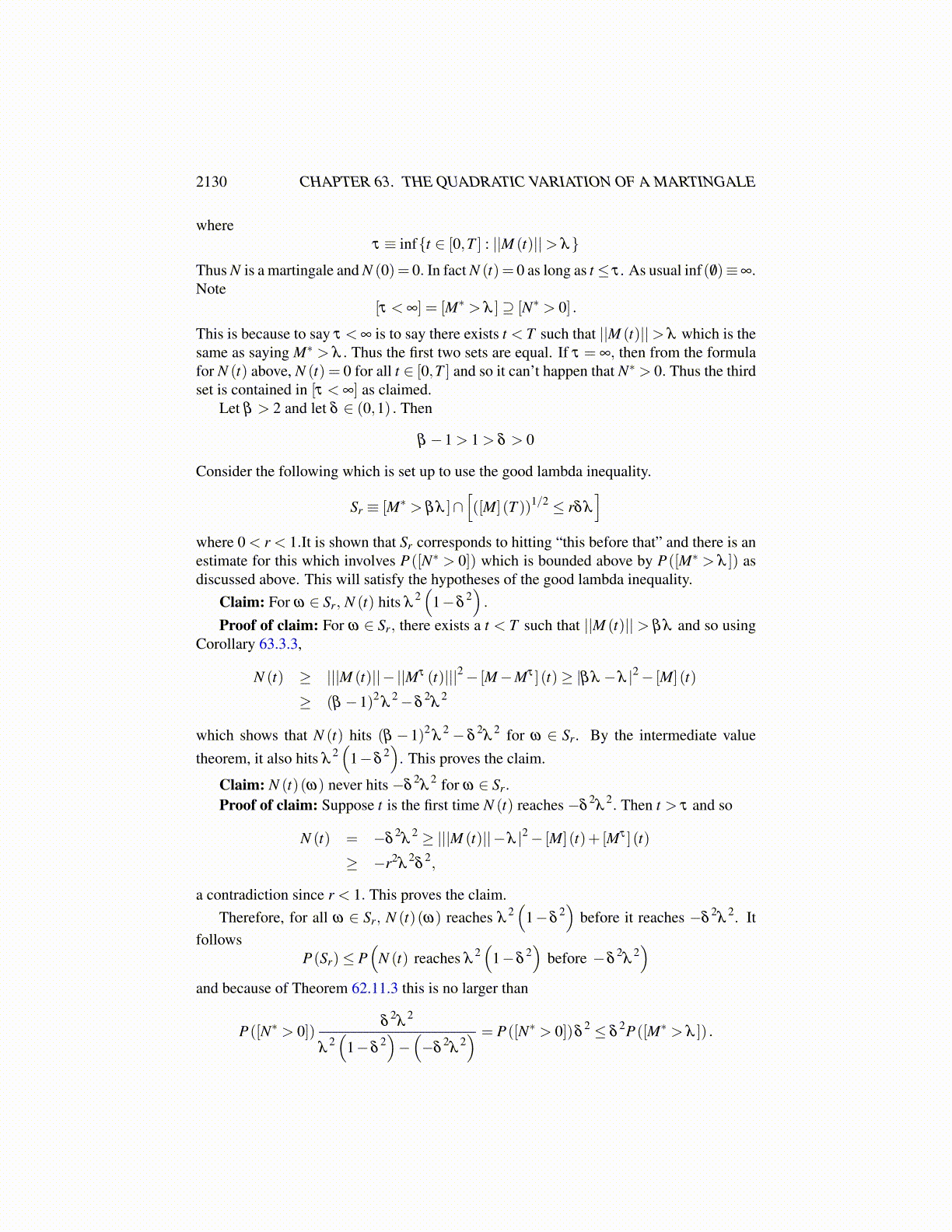
2130 CHAPTER 63. THE QUADRATIC VARIATION OF A MARTINGALE
Now consider the next claim that [M−Mτ ] = [M]− [Mτ ]. From the definition, it follows
[M−Mτ ]− ([M]+ [Mτ ]−2 [M,Mτ ])
= ||M−Mτ ||2−(||M||2 + ||Mτ ||2−2(M,Mτ)
)+ local martingale
= local martingale.
By the first part of the corollary which ensures [M,Mτ ] is of bounded variation, the left sideis the difference of two increasing adapted processes and so by Corollary 63.2.3 again, theleft side equals 0. Thus from the above,
[M−Mτ ] = [M]+ [Mτ ]−2 [M,Mτ ]
= [M]+ [Mτ ]−2 [Mτ ,Mτ ]
= [M]+ [Mτ ]−2 [Mτ ]
= [M]− [Mτ ]≤ [M]
Finally consider the claim that [M,N] is bilinear. From the definition, letting M1,M2,Nbe H valued local martingales,
(aM1 +bM2,N)H = [aM1 +bM2,N]+ local martingalea(M1,N)+b(M2,N)H = a [M1,N]+b [M2,N]+ local martingale
Hence[aM1 +bM2,N]− (a [M1,N]+b [M2,N]) = local martingale.
The left side can be written as the difference of two increasing functions thanks to [M,N]of bounded variation and so by Lemma 63.1.5 it equals 0. [M,N] is obviously symmetricfrom the definition.
63.4 The Burkholder Davis Gundy InequalityDefine
M∗ (ω)≡ sup{||M (t)(ω)|| : t ∈ [0,T ]} .
The Burkholder Davis Gundy inequality is an amazing inequality which involves M∗ and[M] (T ).
Before presenting this, here is the good lambda inequality, Theorem 12.7.1 on Page 299listed here for convenience.
Theorem 63.4.1 Let (Ω,F ,µ) be a finite measure space and let F be a continuous in-creasing function defined on [0,∞) such that F (0) = 0. Suppose also that for all α > 1,there exists a constant Cα such that for all x ∈ [0,∞),
F (αx)≤Cα F (x) .